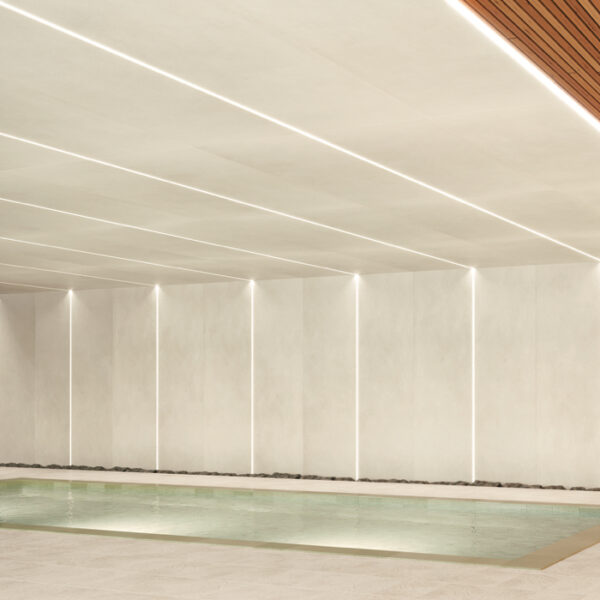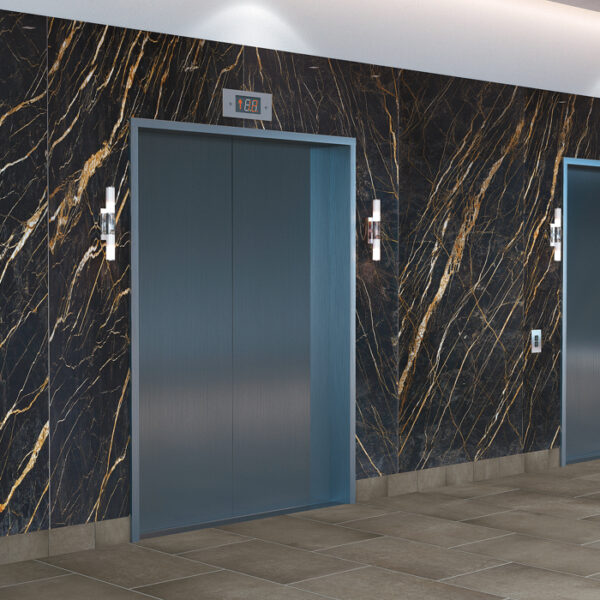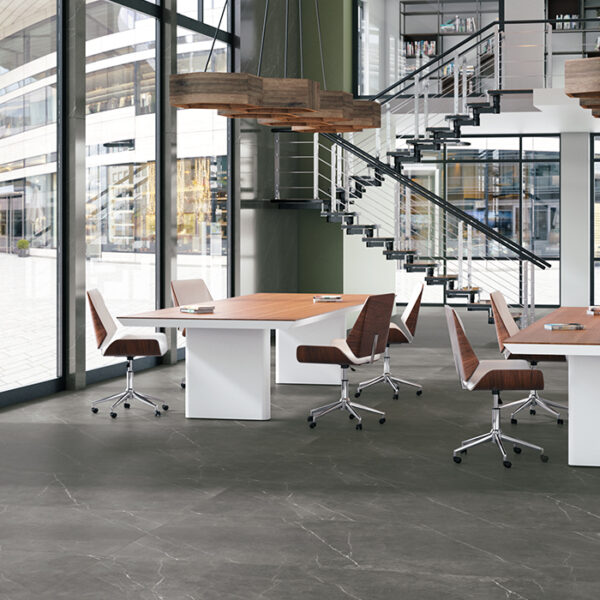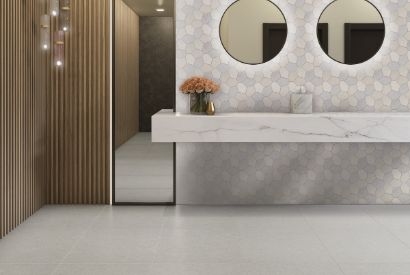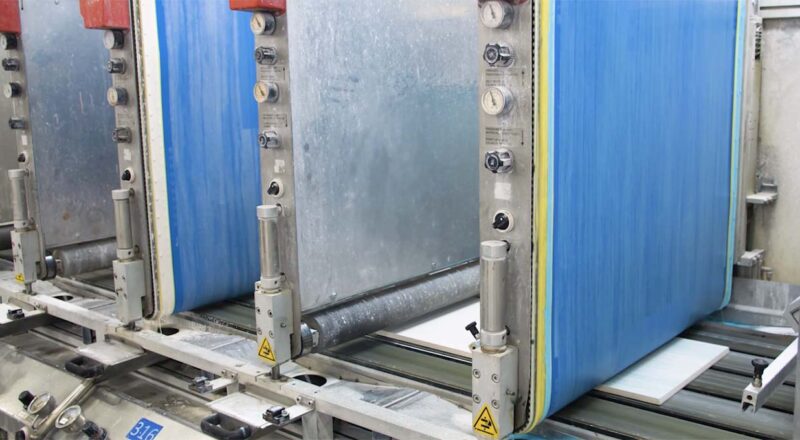Introduced to the U.S. market around a decade ago, gauged porcelain tile panels have experienced consistent growth in popularity. Thanks to ongoing education and training led by Crossville® and the industry, architects, interior designers, and installers have come to understand the material and its many and varied applications available due to the large sizing in feet instead of inches (a single 1×3 meter panel can cover more than 30 square feet!). From installations with minimal grout lines to tile-over-tile installations, the benefits of Crossville’s gauged porcelain tile panels are as expansive as the colors and styles offered, and they have become a tremendous asset to industries such as hospitality and healthcare and homeowners.
A Brief History of Porcelain Tile Panels
Gauged porcelain tile panels didn’t come on the scene until around 2000, when manufacturers created the first machines that would produce a larger tile than ever before. When this innovative tile product was in its infancy, the manufacturers had some difficulty selling their new equipment to tile manufacturers without proof that the porcelain tile products it produced were viable. So, the equipment manufacturers decided to set up factories like the one making our porcelain panels (Laminam). But going back to the beginning of our own porcelain tile panel story, Crossville decided early on that porcelain tile panels would be a new category of material with real potential in the marketplace. While it took some time to create a market in the U.S. for this brand-new product (it’s only been in the last ten years or so that the architectural design community has welcomed them), these big porcelain tiles are very popular today for both residential and commercial applications.
 Laminam® porcelain panels in Calce, a line inspired by a line inspired by wet plaster and concrete, clad several curving corner walls at Dennis-Yarmouth Intermediate/Middle School. Read the case study.
Laminam® porcelain panels in Calce, a line inspired by a line inspired by wet plaster and concrete, clad several curving corner walls at Dennis-Yarmouth Intermediate/Middle School. Read the case study.
Overcoming Porcelain Tile Panels Fabrication & Installation Hurdles
When Crossville decided to embrace gauged porcelain panels, we partnered with Laminam to bring the porcelain panels to the U.S. But we felt it was essential to develop standards to create an infrastructure for the porcelain tile panel category. We also knew that training tile contractors and installers would be important. We could procure the materials easily, and the design community loved the beautifully aesthetic material with fewer grout joints, but who would install the panels? We were concerned that if the contractor or the tile installer was uncomfortable installing this new porcelain product, the installation costs could increase and drive people away. We quickly realized that having a trained porcelain panel installation community would be necessary.
 Porcelain Tile Panels by Laminam in Filo offer a sleek modern style with an edgy, chain-mail texture — a spot-on choice for the design-forward real estate office. Read the case study.
Porcelain Tile Panels by Laminam in Filo offer a sleek modern style with an edgy, chain-mail texture — a spot-on choice for the design-forward real estate office. Read the case study.
Installation & Product Standards for Gauged Porcelain Tile Panels
While there was no doubt this new tile should have a product standard, we believed it was as important, if not more important, to have an installation standard. To make the tile installation community and the A&D specifiers comfortable with the porcelain panels, we had to create both a product standard and an installation standard.
ANSI 137.3, ANSI A108.19, & ANSI A108.20
First, we created a product standard for gauged porcelain tile panels, ANSI 137.3. The porcelain panels had to meet specific criteria, such as breaking strength and water absorption. The standard didn’t just happen overnight — it was five years in the making with large-scale testing. We started on the installation standard three years into creating the product standard. In two years, we had ANSI A108.19, the interior installation standard for gauged porcelain tile using thin set cement-based mortars. Both the product and installation standards were passed and accepted by the American National Standards Institute and are the standards used today. (ANSI A108.20, the exterior vertical installation standard for panels, was added shortly after that.)
Crossville’s Porcelain Tile Panels Offerings Evolve
The first porcelain panels Crossville offered in its lineup were thin, just 3 millimeters, or about an eighth of an inch. People began calling it “thin tile” because of its slim profile. But thin tile wasn’t a great term for this product because the tile can be thicker. Within a year, we offered a thicker slab, 5.6 millimeters, or about a quarter of an inch. The 3 mm tile panels are intended for vertical use only, while our 5.6mm panels can be installed on walls and floors. The advanced design and durability of the panels enable the use of porcelain tile in previously impossible applications, such as tile-over-tile installations.
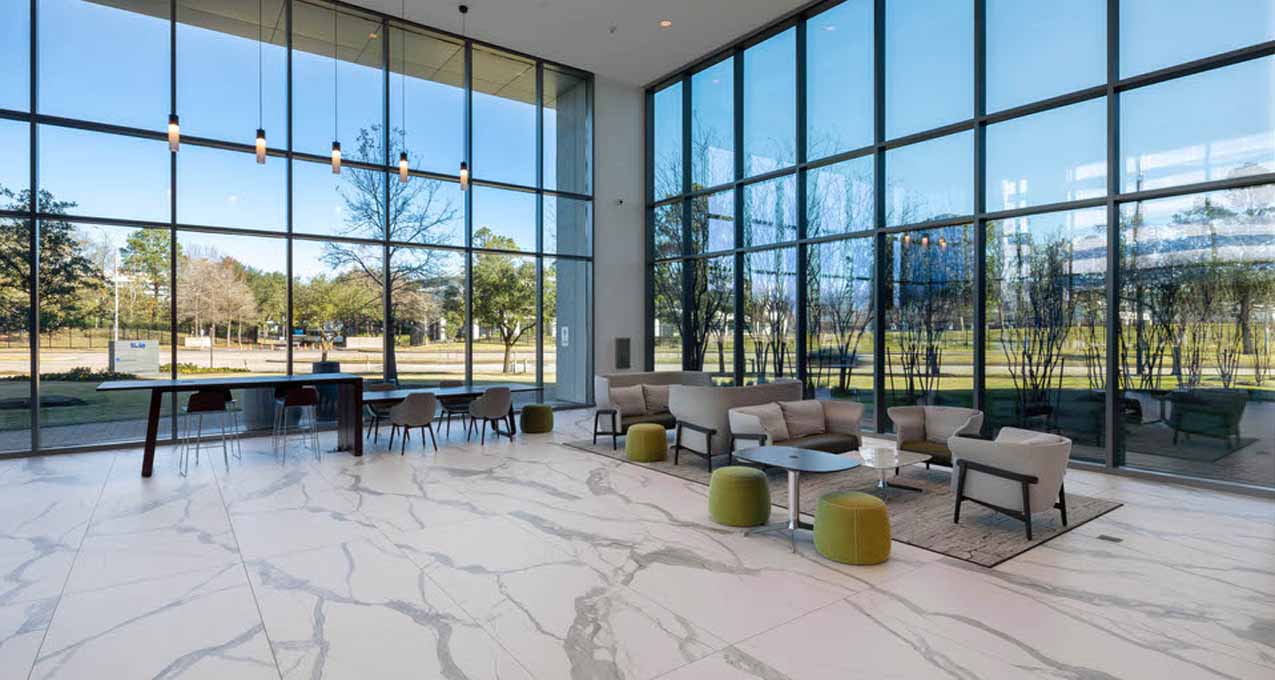 Crossville’s I Naturali porcelain tile panels in the Statuario Altissimo colorway were used for a tile-over-paver installation at a Houston office. The marble-look porcelain tiles provide a timeless yet contemporary design as the first impression for this busy office building. Read the case study.
Crossville’s I Naturali porcelain tile panels in the Statuario Altissimo colorway were used for a tile-over-paver installation at a Houston office. The marble-look porcelain tiles provide a timeless yet contemporary design as the first impression for this busy office building. Read the case study.
Porcelain Slabs and Countertops
We eventually added an even thicker porcelain material, a 12 mm tile product called Crossville Porcelain Slabs and Countertops™. Like our porcelain tile panels, Crossville countertops are available in an expansive range of colors and styles. Porcelain slabs have become popular with residential interior designers and homeowners as a beautiful, durable, and easy-to-maintain alternative to other countertop materials, such as natural or engineered stone products. Commercial designers are incorporating porcelain slabs into reception desks, furniture, and more. Learn more about Crossville porcelain slabs and countertops here.
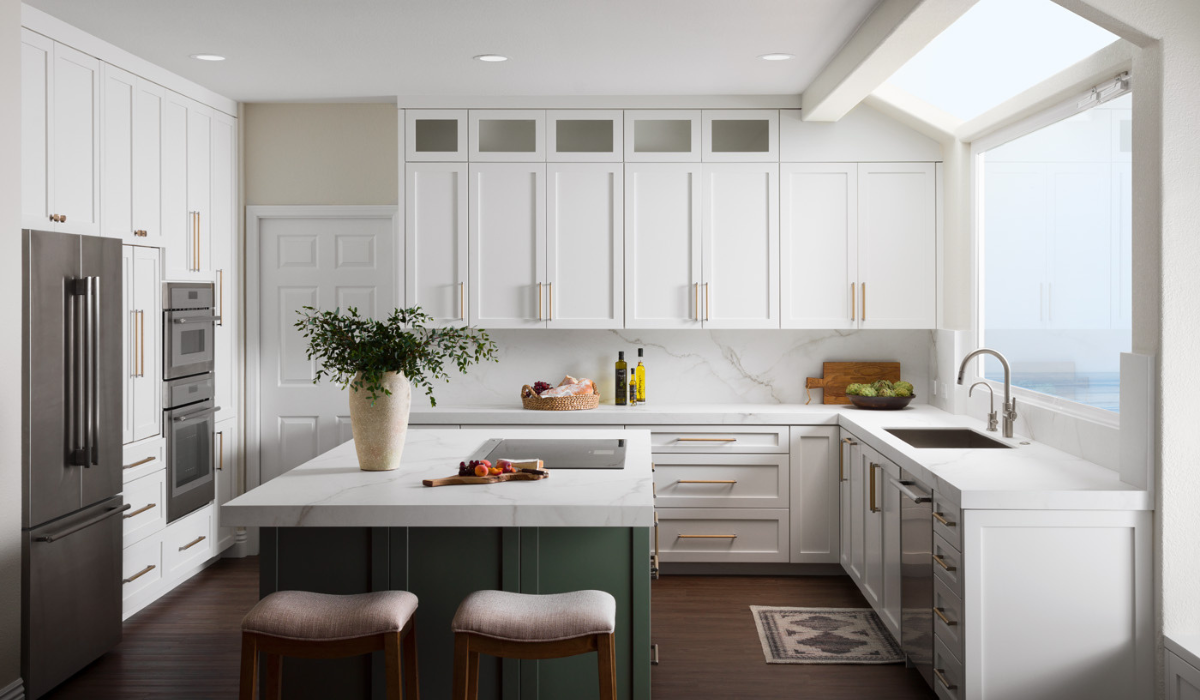 Crossville Porcelain Slabs in the Lightning color clad the countertops, island, and backsplash is a home overlooking the Pacific Ocean. The uninterrupted expanse of marble-look porcelain countertops reflect the organic nature of the Pacific Ocean outside the kitchen window. Read the case study.
Crossville Porcelain Slabs in the Lightning color clad the countertops, island, and backsplash is a home overlooking the Pacific Ocean. The uninterrupted expanse of marble-look porcelain countertops reflect the organic nature of the Pacific Ocean outside the kitchen window. Read the case study.
Sustainability of Porcelain Panels
Crossville Porcelain Tile Panels by Laminam are a beautiful alternative to standard floor and wall tiles for those desiring a modern, clean look with minimal grout lines. The panels and slabs are materials you can feel good about as they are sustainably manufactured, starting with sourcing and continuing until the final product stage. And as an added eco-friendly bonus, the panels’ manufacturing process consumes less energy due to their reduced thickness. Additionally, they have earned a MindClick Leader rating for environmental impact. MindClick is a leader in rating manufacturers’ environmental health performance and their products through their MindClick Sustainability Assessment Program (MSAP). The panels and slab countertops have published EPD, HPD, and Declare Label.
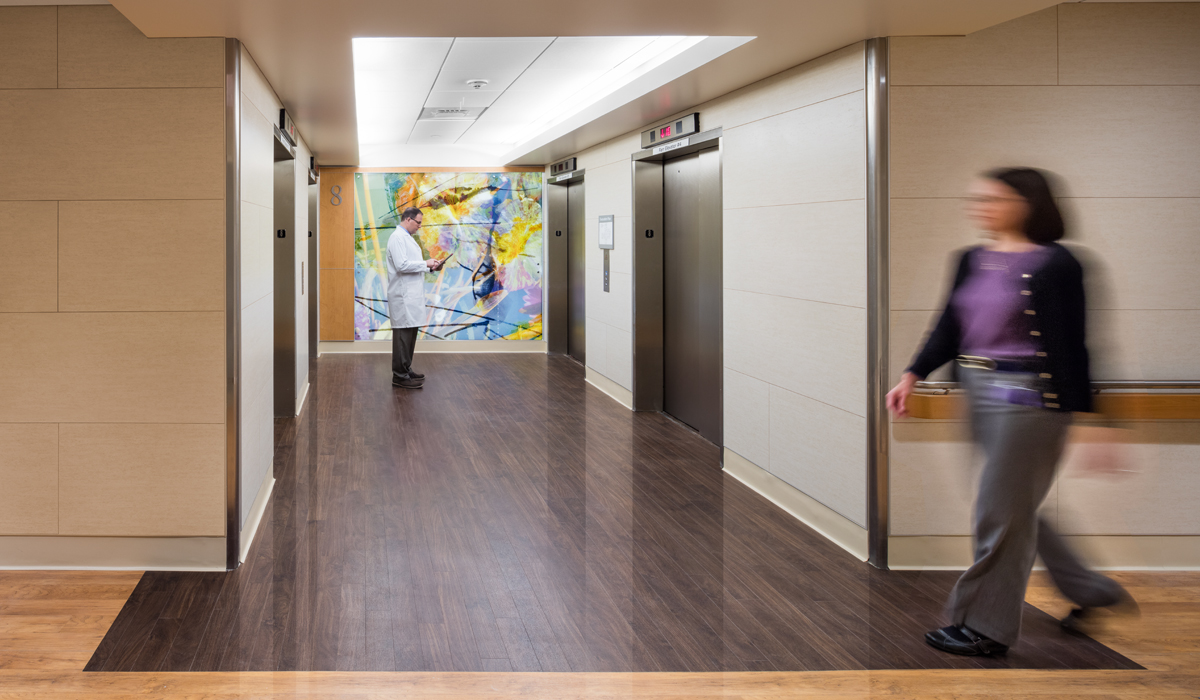
Porcelain panels from the I Naturali collection in Travertino Avorio protect the walls in an elevator bank at Beth Israel Deaconess Medical Center in Boston. Read the case study.
Residential designers and homeowners have embraced our porcelain panels and are discovering more creative ways to incorporate them into kitchens, bathrooms, and living areas. In the hospitality and healthcare industries, commercial designers specify porcelain panels as an alternative to commercial tile on floors and walls in elevator banks, reception areas, guest rooms, bathrooms, and more. The potentiality of installing tile over existing tiled floors and walls in commercial environments creates an excellent opportunity to eliminate demolition with its associated expense, mess, and downtime.
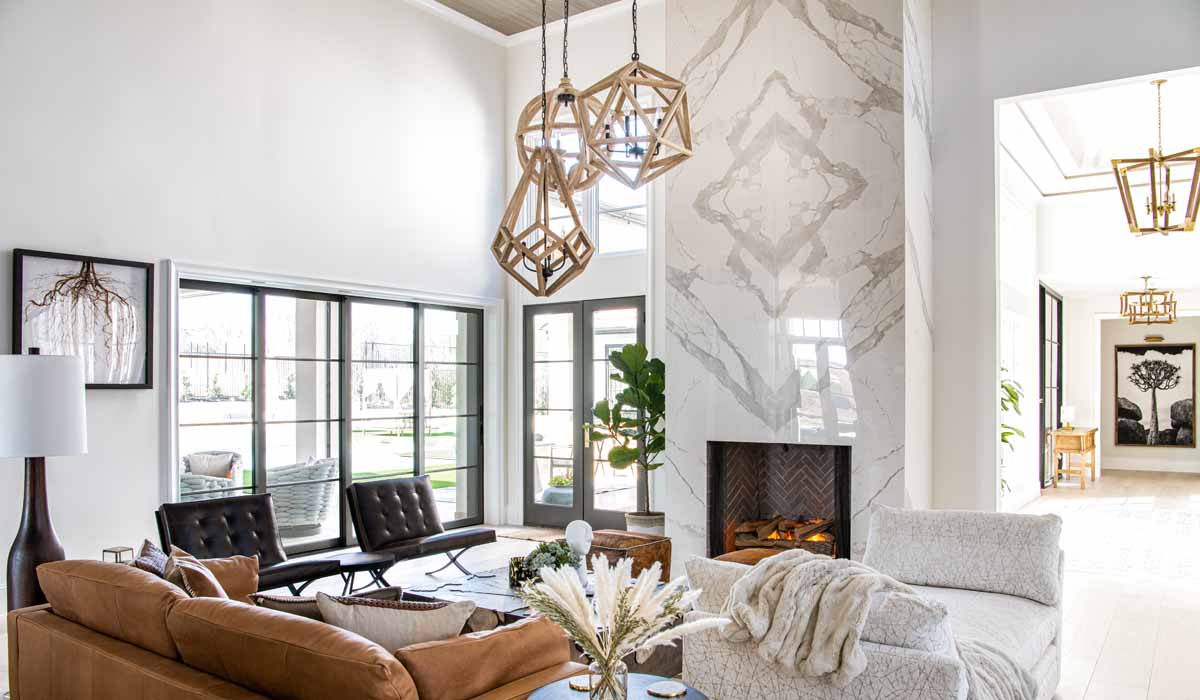 I Naturali porcelain panels in Statuario Venato Bookmatch are used for a stunning fireplace surround/focal point at the Fort Worth Magazine Dream Street Project. Read the case study.
I Naturali porcelain panels in Statuario Venato Bookmatch are used for a stunning fireplace surround/focal point at the Fort Worth Magazine Dream Street Project. Read the case study.
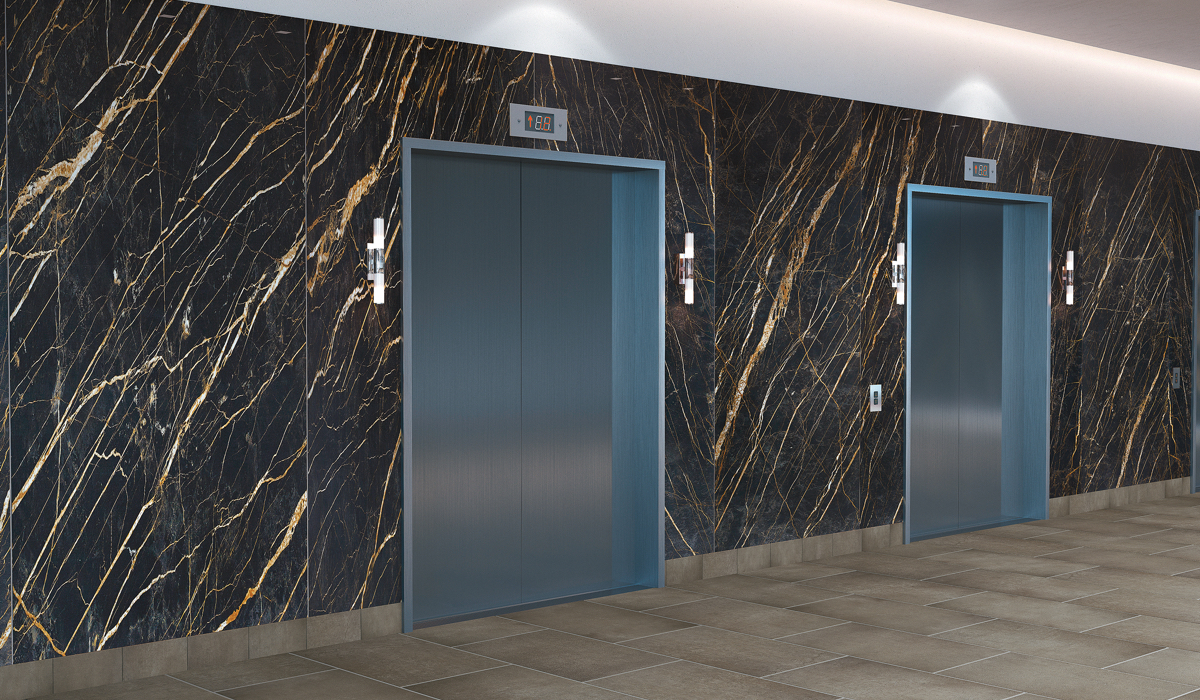
Cava Noir Desir polished porcelain panels skin a wall and a hidden door in an upscale Atlanta highrise. Read the case study.
 Blend Avorio porcelain panels clad the elevator bank walls at Boston Medical Center.
Blend Avorio porcelain panels clad the elevator bank walls at Boston Medical Center.
 Cava Bianco Lasa porcelain panels used in a tile-over-tile installation at Bank of America Plaza at Las Olas City Centre, Ft. Lauderdale. Read the case study.
Cava Bianco Lasa porcelain panels used in a tile-over-tile installation at Bank of America Plaza at Las Olas City Centre, Ft. Lauderdale. Read the case study.
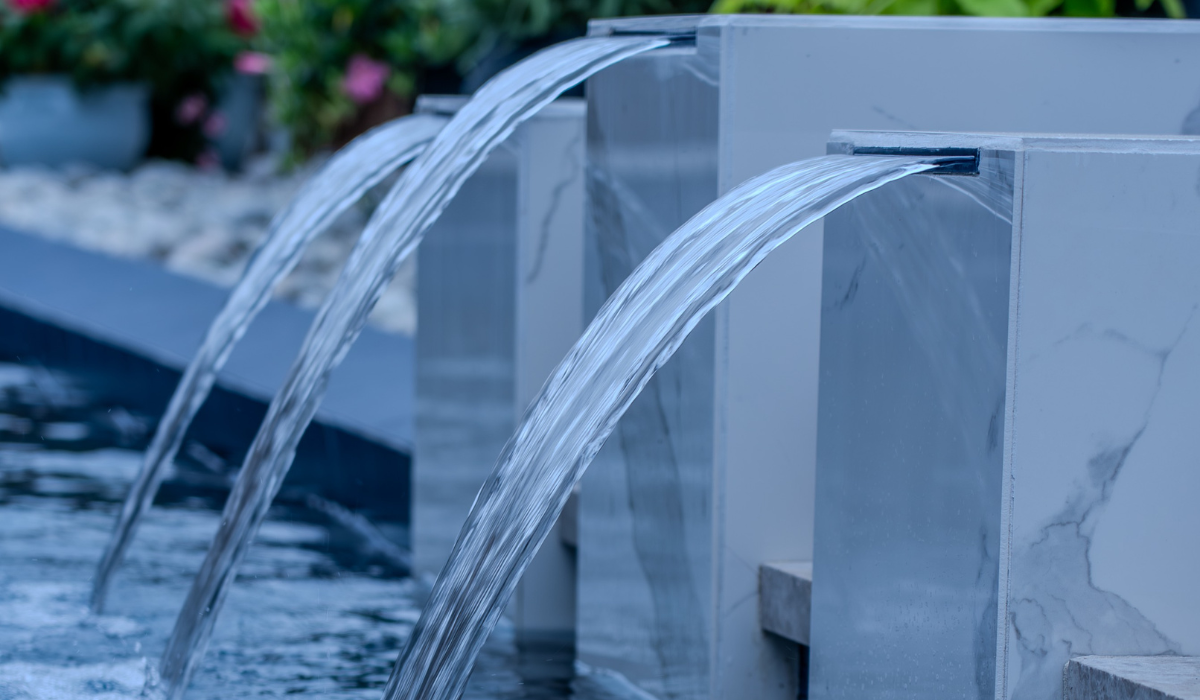
A unique water feature with three waterfalls is fabricated from porcelain panels from our I Naturali collection in the Statuario Venato color. Read the case study.
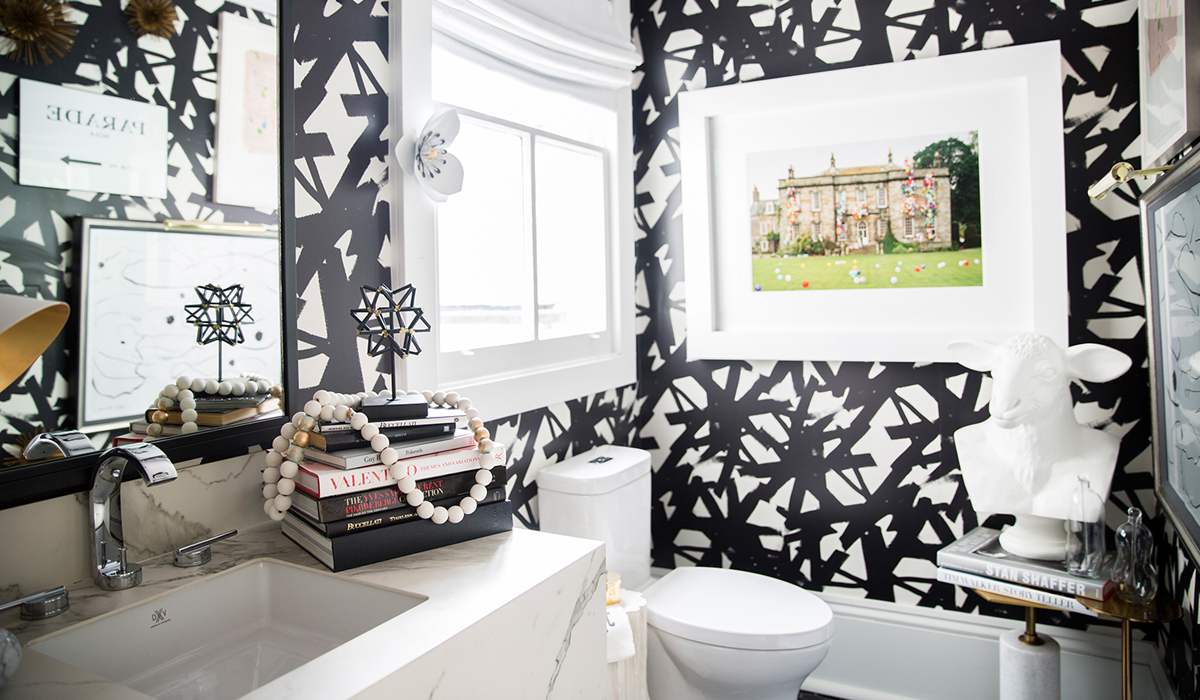
The marble appearance of I Naturali porcelain panels on a vanity countertop and shower walls in a New Orleans showhouse is the ideal sleek and simple touch and will outperform true marble in terms of lasting durability and ease of cleaning. Read the case study.
Great Design Starts with a Sample!
Click here to view all the Crossville Laminam porcelain panel options. Create an account to order free tile samples and experience the quality, beauty, and durability of our sustainable porcelain panels first-hand.
Want to learn even more about porcelain tile panels? Click here to view the full Tech Talk on the subject with Noah Chitty, AHF®’s director VP Sustainability and Technical Services (aka our resident tile tech guru).



